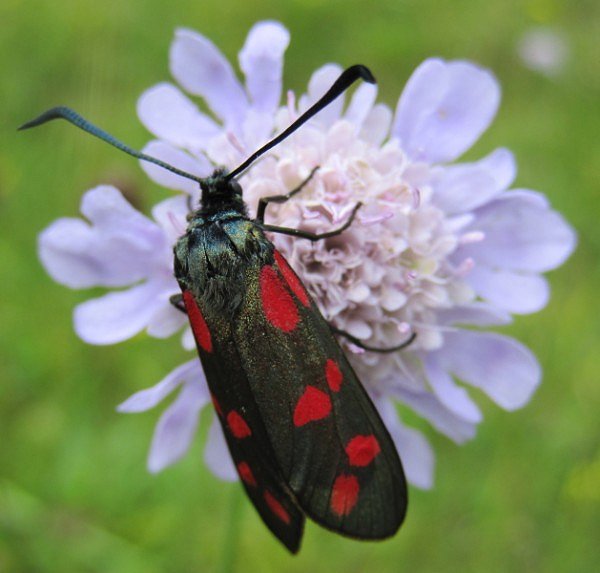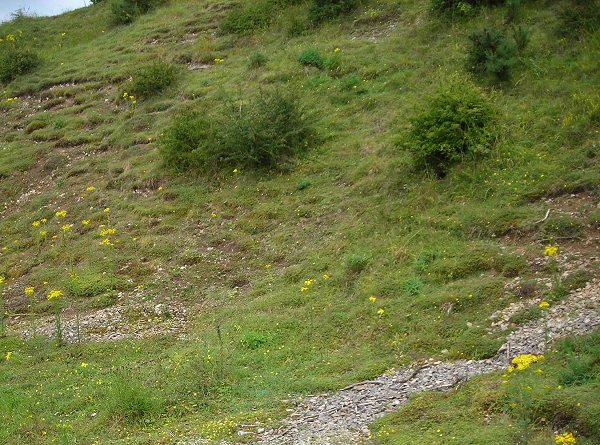
There were numerous plants of carline thistle Carlina vulgaris on the barer slopes and scree, mainly the south-facing ones. This was a particularly impressive plant.
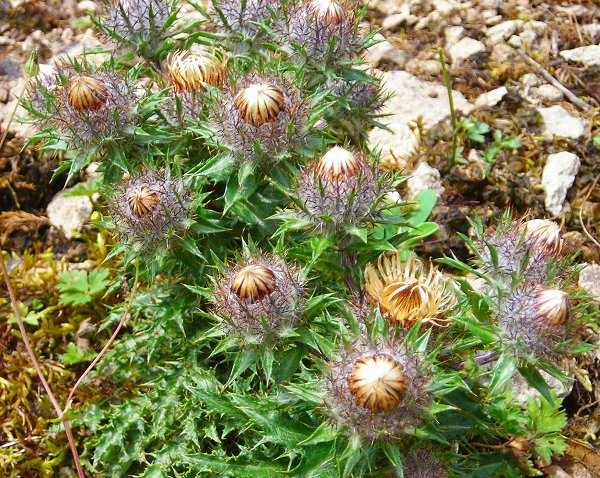
One of the many colourful flowers growing here: basil Clinopodium vulgare.

There were lots of these very colourful butterflies flying fast over the meadow; occasionally they landed long enough for a portrait – almost always on purple flowers such as knapweed or spear thistle as here. Dark green fritillary Argynnis aglaja. There is also a marmalade hoverfly Episyrphus balteatus in the picture.
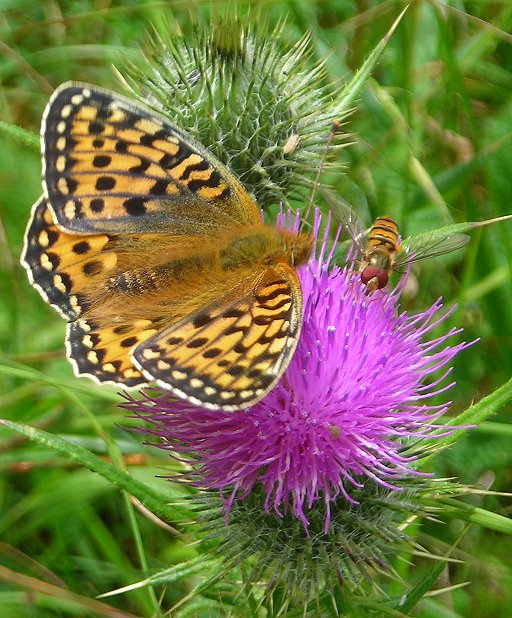
The underside of the fritillary, showing the greenish background. Unfortunately this was the only clear shot I got, and that cut off the top of the wings....
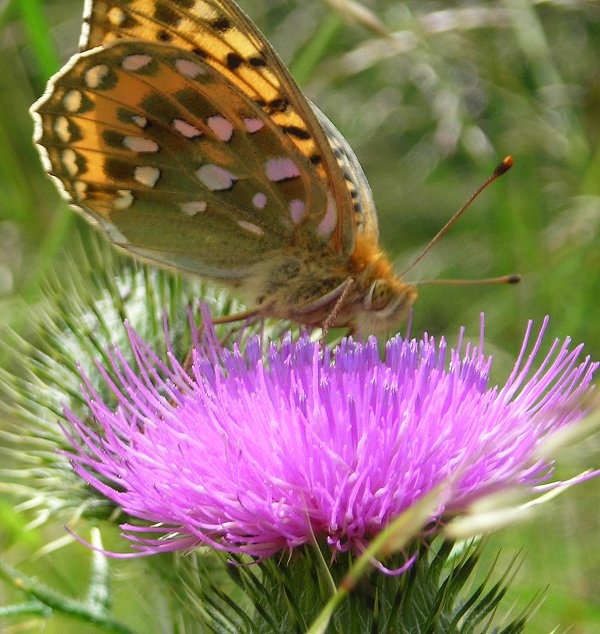
I think this is the female, with the much paler spots round the edge and the generally yellower colouring.
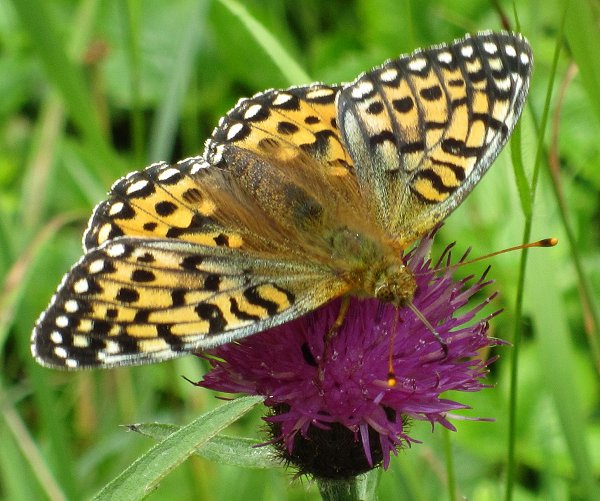
There were also a lot of marbled white butterflies (Melanargia galathea). These are a relatively new addition to Ryedale, moving north from the Wolds in recent years, perhaps a sign of global warming.
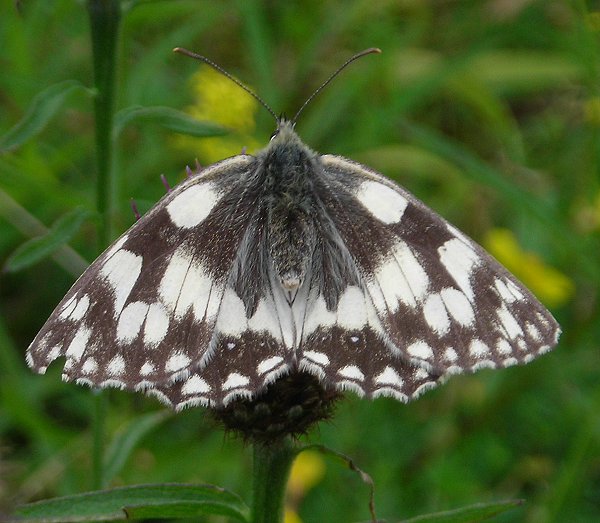
Still on insects: this hoverfly is a female Sericomyia silentis
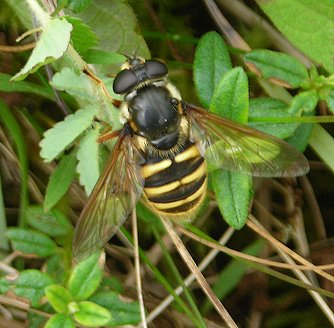
This wasp’s nest seemed to have been dug out from the rabbit hole where it was built, and bits of it scattered about on the ground. I suspect badgers may be the culprits. There were still one or two dazed wasps crawling over the destroyed cells in a confused fashion.
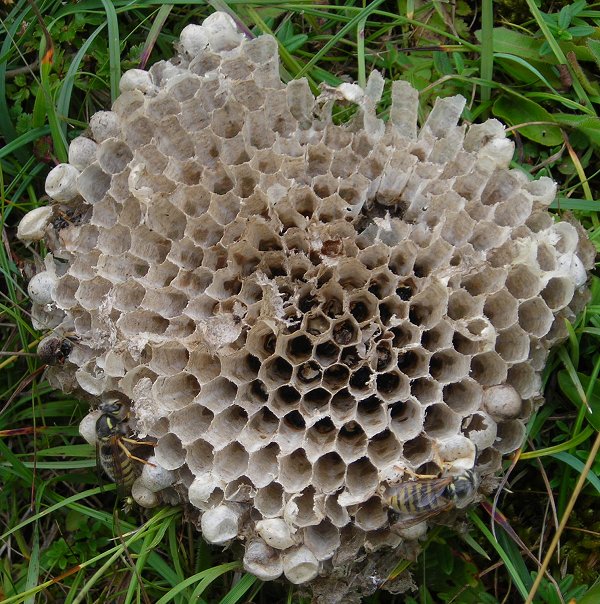
A close-up of one of the confused wasps. I don’t know which species it is, probably either the common or German wasp.

There were half a dozen or so nice spikes of pyramidal orchid Anacamptis pyramidalis, mostly near the bottom of the slope. This is one of only two pink British orchids with a very long, slender spur (fragrant orchid is the other).
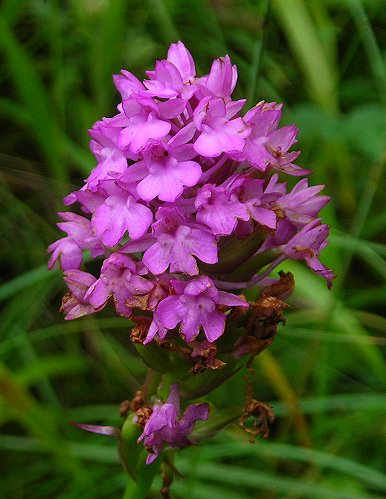
This shows the string-like threads which are the stems of dodder Cuscuta epithymum; the plant has no need of leaves since it is parasitic on other vegetation, in this case apparently rockrose.
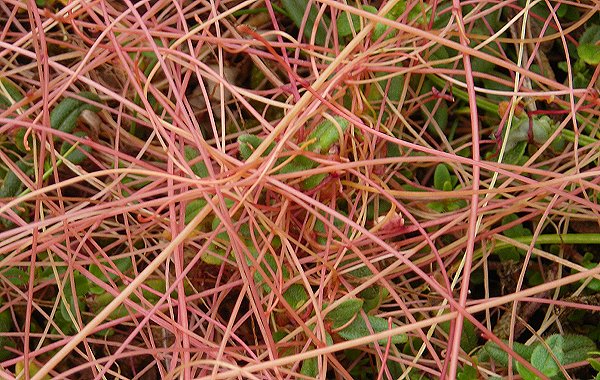
A mat of dodder covering the ground flora. It is not clear how many dodder plants this represents.
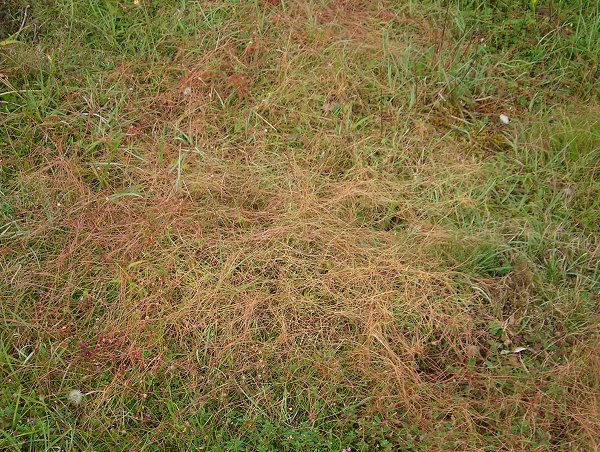
Dodder has no leaves but it does produce small bell-shaped flowers in small round clusters.
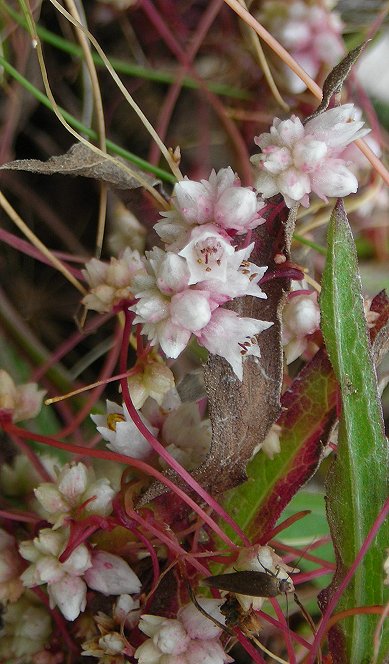
This shows the dodder stems twining up a knapweed stalk. The threads have projections into the host plant through which they draw water and nutrients.
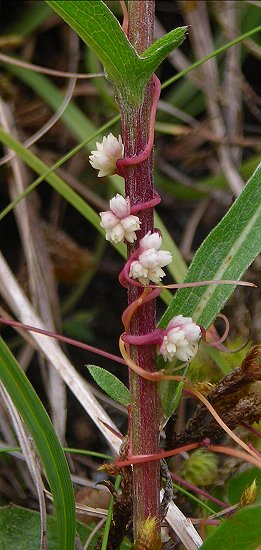
This shows the dodder plant in its flowering stage; at this point the reddish threads tend to wither away, having drawn enough goodness from the host plant to produce viable flowers and seeds. The host is severely weakened or even killed.
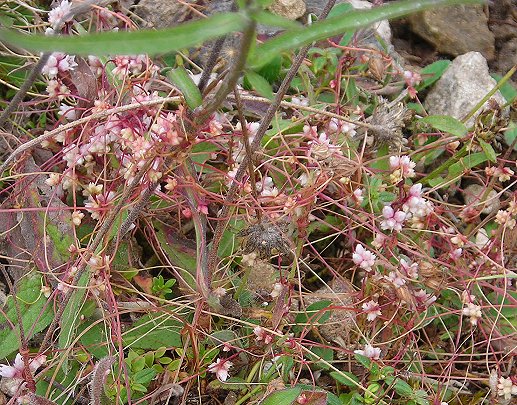
Just as we thought we weren’t going to find the basil thyme at all, we saw this one – close to a carline thistle I’d approached to photograph. The basil thyme Clinopodium acinos is tiny with flowers only about 3-4mm across, but a real gem. Despite its name, and indeed appearance, it is not aromatic, unlike the wild thyme growing nearby.
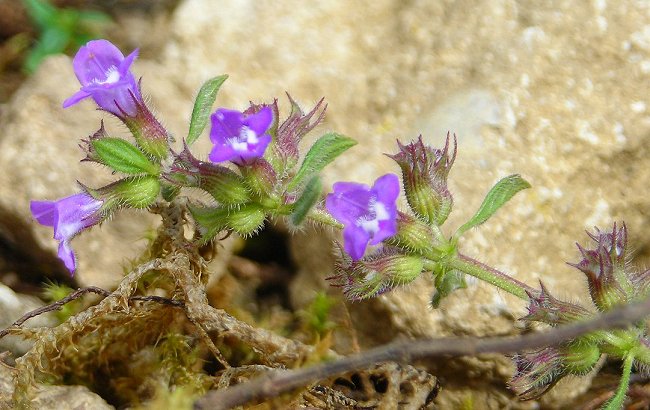
Finally, a colourful burnet moth – the 6-spot burnet Zygaena filipendulae
